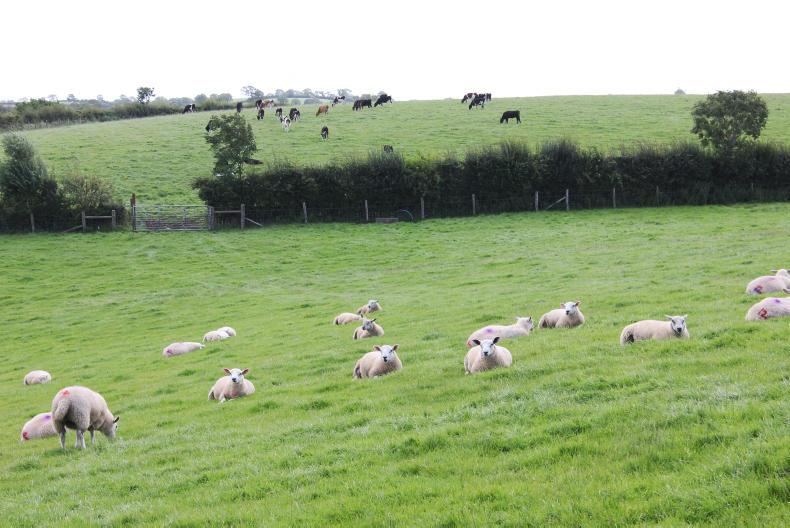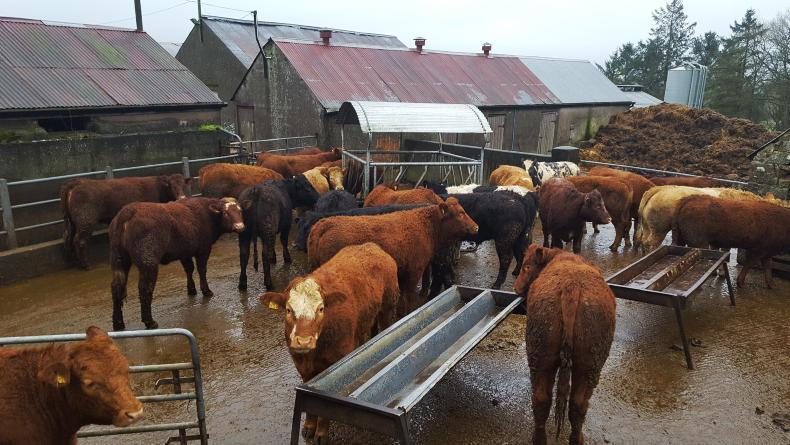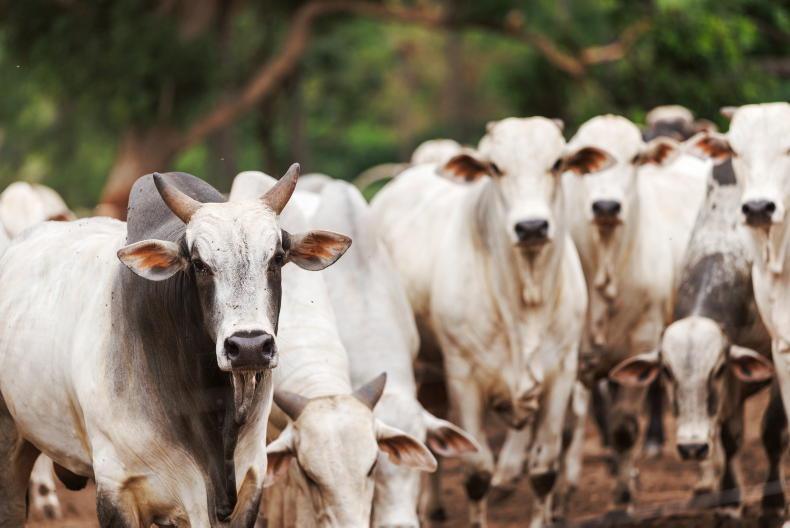Whether you agree with it or not, the long-term future and viability of beef and lamb production may be closely linked to contractual agreements.
It doesn’t matter whether this is viewed as the death knell of free trading and you see yourself being stitched up like a kipper, or whether you welcome this development with open arms. The point is that more and more areas of agriculture involve some sort of written or oral contract, and it cannot be ignored.
One by one, individual types of farming have steadily slid from small, standalone outfits that sold their produce in an open market, to amalgamation and consolidation into large supplier organisations that possibly use smaller producers as umbrella feeders.
Best example
The best example of change that I can think of concerns the vegetable industry, with probably the same total acreage used for growing fresh produce, but the management of that area being under the control of perhaps a quarter of the number of operators.
Back in the seventies, our school bus travelled between Comber and Newtownards every day, and both sides of that dual carriageway were lined with field after field of perfect-looking vegetables. Staring out of the window, I’d guess we could see crops that belonged to 12 or 14 individual farms.
If you drive that same road today, you’ll most likely see a similar assortment of produce, but now three or four farming outfits are growing it.
The point here is that when I left school, there were numerous examples of farmers in all these branches of agriculture who produced for an open market.
Think of pig units, the poultry industry, or potato crops, and then try to work out how many of the people involved would set out at the beginning of their year without any sort of prior arrangement.
The point here is that when I left school, there were numerous examples of farmers in all these branches of agriculture who produced for an open market.
That has now changed, and slowly but surely that last great bastion of unspecified production (ie beef and lamb) is succumbing to the ever-tightening noose of modern requirements and regulations.
Beef
Large-scale beef producers may not have an officially signed contract, but they may well have some sort of agreed price in place that gives them the luxury of knowing the end price when buying stores for fattening.
This is surely the first step in a familiar journey towards contract farming, and one that will steadily become more and more prevalent, and before we know where we are, even the ‘‘wee men’’ like myself will have signed on the dotted line.
Sheep
That possibly leaves the sheepmeat industry as one of the few branches of farming that leaves its producers free to sell wherever they like.
Well, for anyone hoping to cling to this beacon of free enterprise, I have bad news.
About 15 farmers in NI have signed a contract to supply one of our main supermarkets with their entire lamb crop. I know this because I am one of them, and in truth this experimental venture was something I jumped into with open arms.
I’m neither defending nor condemning this development, merely pointing out that I see it as something that is almost inevitable, and to ignore it would be burying our heads in the sand. Before signing up, I thought long and hard and looked at other parts of this farm – the comparison was stark.
When I buy store bullocks, I have no idea whether they’ll leave a single penny of profit one year later. And the same goes for the small area of spring barley grown: it has fluctuated in recent years between £105, and £160 per tonne off the combine.
In contrast, the pullet rearing is boringly predictable, but within that dull certainty is the comfort of knowing exactly how much money will land into my account and when it will come in. From that comes the confidence to invest in, and purchase, whatever toys and presents I fancy.
Question
At a recent meeting of sheep farmers, the speaker asked how many in the room would sign a contract to supply lamb. Very few raised their hands (mine went up like a shot) and I wondered if the same question is asked 10 years from now, what will be the response then?
Read More
Listen: waterlogged land, fences washed away and livestock lost
Planning for a future in dairying
Whether you agree with it or not, the long-term future and viability of beef and lamb production may be closely linked to contractual agreements.
It doesn’t matter whether this is viewed as the death knell of free trading and you see yourself being stitched up like a kipper, or whether you welcome this development with open arms. The point is that more and more areas of agriculture involve some sort of written or oral contract, and it cannot be ignored.
One by one, individual types of farming have steadily slid from small, standalone outfits that sold their produce in an open market, to amalgamation and consolidation into large supplier organisations that possibly use smaller producers as umbrella feeders.
Best example
The best example of change that I can think of concerns the vegetable industry, with probably the same total acreage used for growing fresh produce, but the management of that area being under the control of perhaps a quarter of the number of operators.
Back in the seventies, our school bus travelled between Comber and Newtownards every day, and both sides of that dual carriageway were lined with field after field of perfect-looking vegetables. Staring out of the window, I’d guess we could see crops that belonged to 12 or 14 individual farms.
If you drive that same road today, you’ll most likely see a similar assortment of produce, but now three or four farming outfits are growing it.
The point here is that when I left school, there were numerous examples of farmers in all these branches of agriculture who produced for an open market.
Think of pig units, the poultry industry, or potato crops, and then try to work out how many of the people involved would set out at the beginning of their year without any sort of prior arrangement.
The point here is that when I left school, there were numerous examples of farmers in all these branches of agriculture who produced for an open market.
That has now changed, and slowly but surely that last great bastion of unspecified production (ie beef and lamb) is succumbing to the ever-tightening noose of modern requirements and regulations.
Beef
Large-scale beef producers may not have an officially signed contract, but they may well have some sort of agreed price in place that gives them the luxury of knowing the end price when buying stores for fattening.
This is surely the first step in a familiar journey towards contract farming, and one that will steadily become more and more prevalent, and before we know where we are, even the ‘‘wee men’’ like myself will have signed on the dotted line.
Sheep
That possibly leaves the sheepmeat industry as one of the few branches of farming that leaves its producers free to sell wherever they like.
Well, for anyone hoping to cling to this beacon of free enterprise, I have bad news.
About 15 farmers in NI have signed a contract to supply one of our main supermarkets with their entire lamb crop. I know this because I am one of them, and in truth this experimental venture was something I jumped into with open arms.
I’m neither defending nor condemning this development, merely pointing out that I see it as something that is almost inevitable, and to ignore it would be burying our heads in the sand. Before signing up, I thought long and hard and looked at other parts of this farm – the comparison was stark.
When I buy store bullocks, I have no idea whether they’ll leave a single penny of profit one year later. And the same goes for the small area of spring barley grown: it has fluctuated in recent years between £105, and £160 per tonne off the combine.
In contrast, the pullet rearing is boringly predictable, but within that dull certainty is the comfort of knowing exactly how much money will land into my account and when it will come in. From that comes the confidence to invest in, and purchase, whatever toys and presents I fancy.
Question
At a recent meeting of sheep farmers, the speaker asked how many in the room would sign a contract to supply lamb. Very few raised their hands (mine went up like a shot) and I wondered if the same question is asked 10 years from now, what will be the response then?
Read More
Listen: waterlogged land, fences washed away and livestock lost
Planning for a future in dairying










SHARING OPTIONS